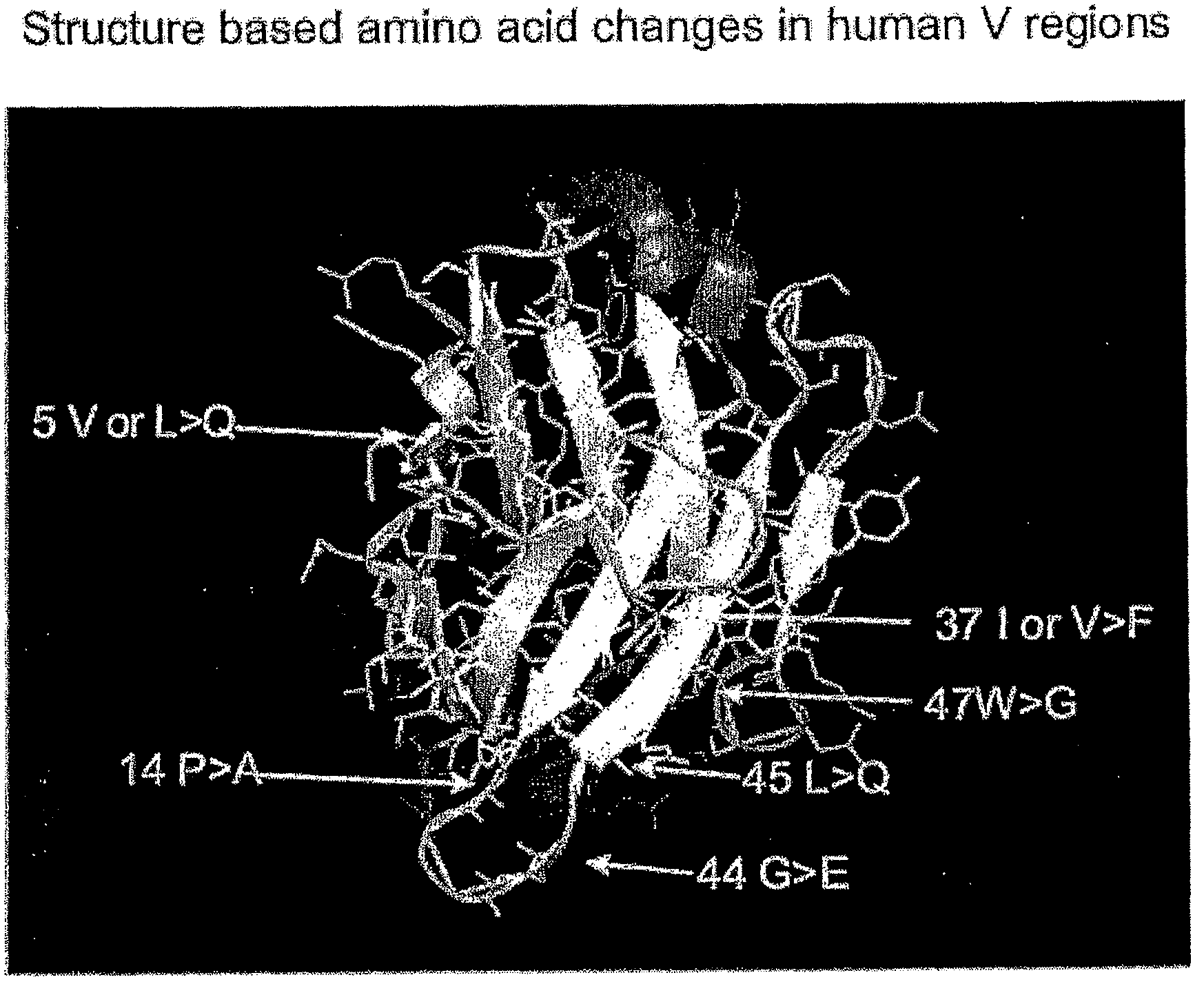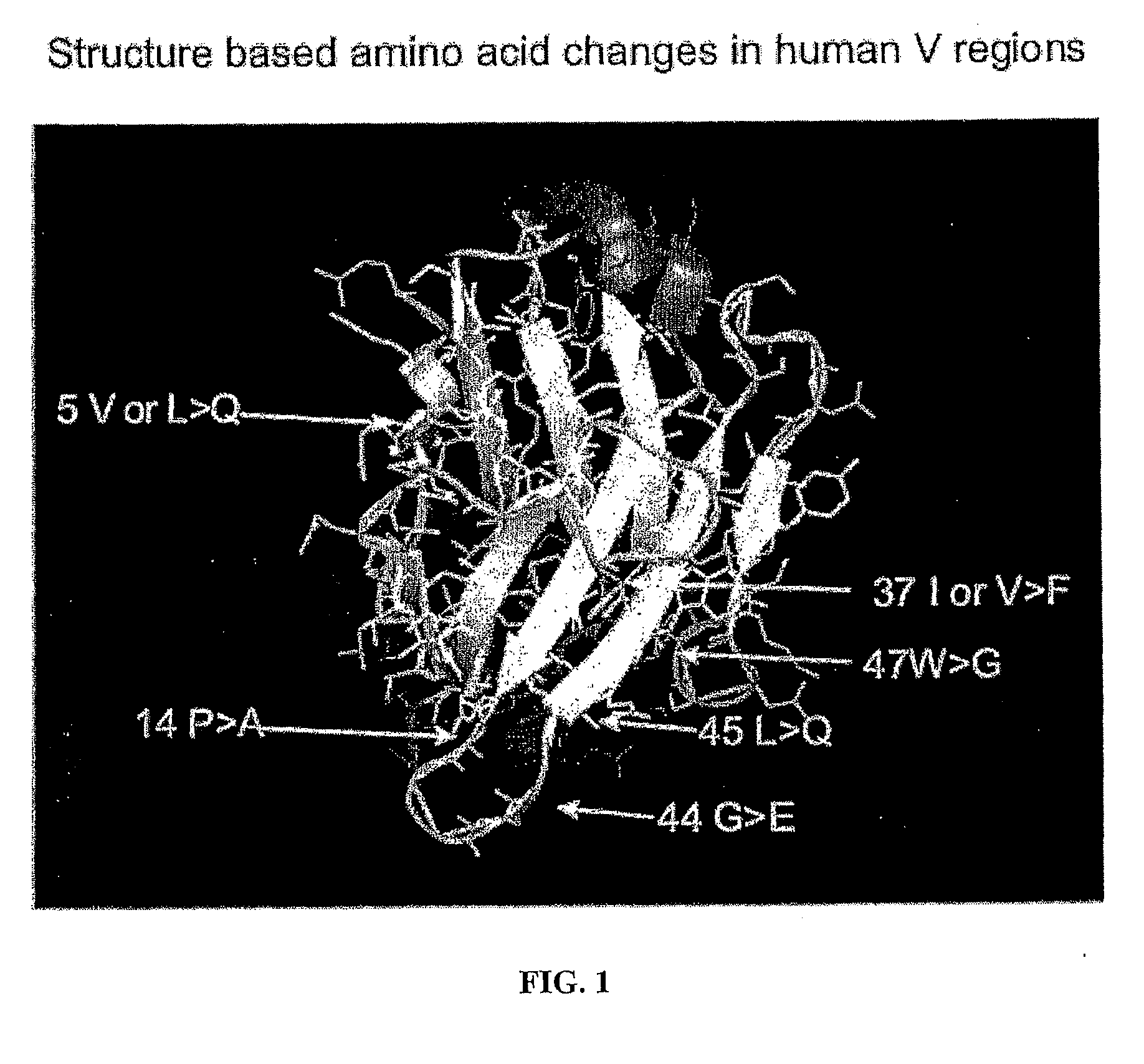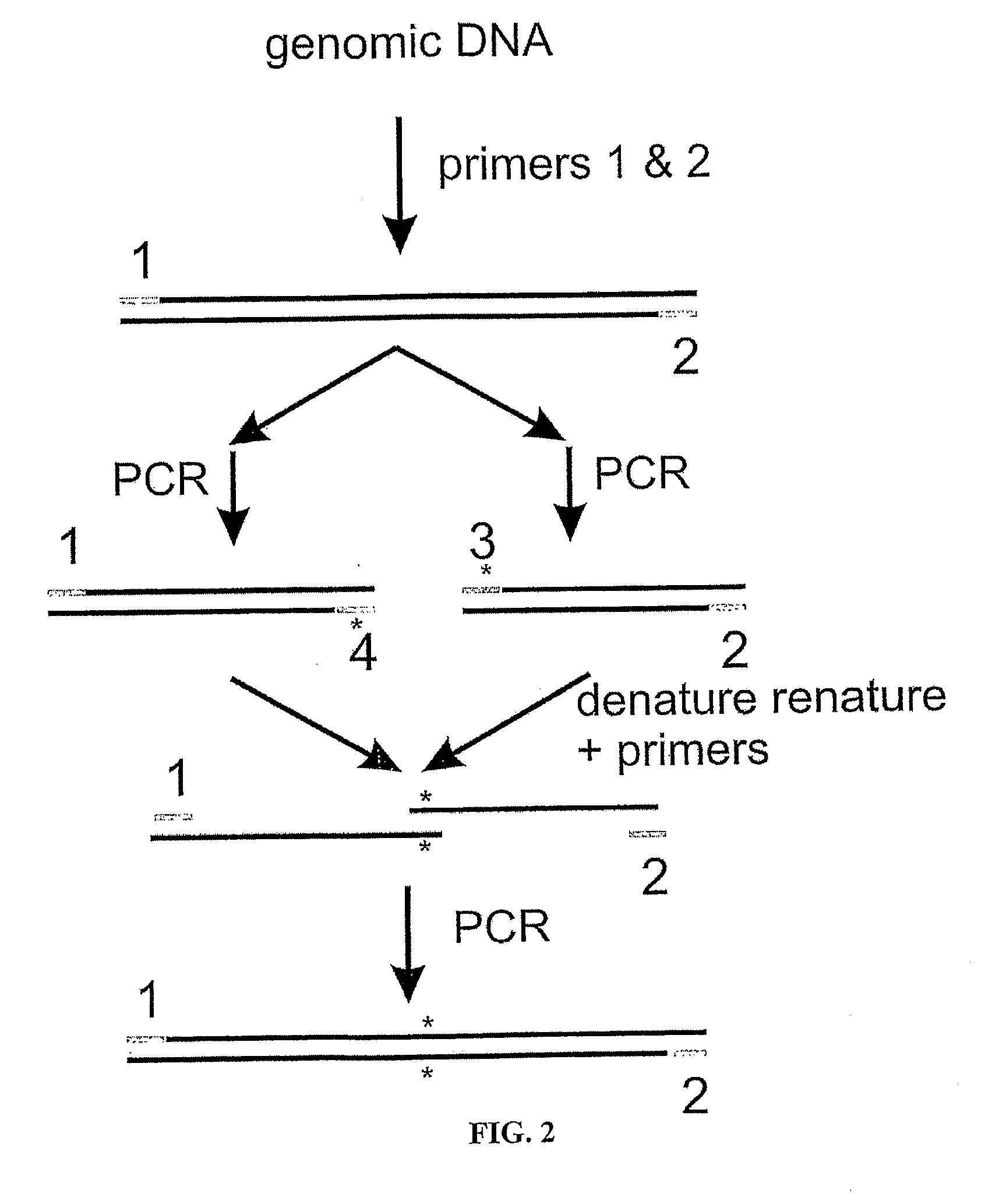Binding molecules
a technology of binding molecules and molecules, applied in the field of binding molecules, can solve the problems of limiting the potential of antibody-based therapies, high production costs and capital costs of mammalian cell culture production of antibody-based products, and the inability to engineer or camelise human vsub>h/sub>domains, etc., to achieve maximum antigen-binding potential and maximum heavy chain-only antibody diversity
- Summary
- Abstract
- Description
- Claims
- Application Information
AI Technical Summary
Benefits of technology
Problems solved by technology
Method used
Image
Examples
example 1
[0098]The construction of transgenic non-human mice containing functional heavy chain-only gene loci.
[0099]In a preferred embodiment of the first aspect of the invention, a number of human V gene segments are cloned onto a multiply-modified human locus containing the entire D region, the entire J region, the Cμ, Cγ2, Cγ3 and Cα regions and the 3′LCR using those methods described in [16] and known in the art.
[0100]All human V gene segments are available on a yeast artificial chromosome (YAC). The functional human V gene segments are cloned in sets onto the locus described in [16], i.e. comprising the human D plus J and Cμ, Cγ2, Cγ3 each lacking a CH1 plus 3′ LCR. The Cα region plus switch regions may be cloned with lox sites (the CH1 would be removed by homologous recombination).
[0101]The functional V gene segments may be cloned together, with any multiple on each locus. Initially, the functional human V gene segments will each be cloned. To each of these initial constructs, a second...
example 2
[0106]Generation of a functional human heavy chain locus comprising 17 engineered V gene segments and the production of soluble heavy chain-only antibody in transgenic mice.
[0107]Antibody loci are generated by “cassetting” mutated human V gene segments into a locus containing all of the human D regions, all of the human J regions, any one (or more) of the human constant regions from which the CH1 domain has been removed and the immunoglobulin LCR. The removal of the CH1 domain ensures that expression of the locus will result in the production of heavy chain only immunoglobulins ([16] and the example above). Inclusion of the LCR in addition to intragenic enhancer elements maximizes the B-cell specific gene regulation and overcomes position effects due to the random nature of integration of the immunoglobulin heavy chain loci in the host genome.
[0108]This example describes the generation of a completely human locus containing 17 V gene segments (FIG. 1 bottom). This locus is as descri...
example 3
[0161]In example 2 we teach: the prediction of new mutations to confer improved solubility and stability into VH domains; the introduction of engineered V gene segments into a heavy chain locus; the analysis of transgene expression; the identification of preferred mutated V gene segments present in VH domains as a result of VDJ rearrangement leading to the presence of soluble and stable heavy chain-only antibody circulating under physiological conditions in plasma.
[0162]In a third example, a number of further preferred mutations deduced in silico (see example 1) are introduced into human V gene segments (for examples of sequences see FIG. 1). In this example, the mutations are such that a charged amino acid is created at position 45 in analogy with the presence of a charged amino acid at that position in camelid VHH regions so as, to improve solubility, and further synergistic mutations are introduced elsewhere so as to maintain VH stability.
[0163]Thus (see FIG. 3 for the sequences ...
PUM
| Property | Measurement | Unit |
|---|---|---|
| hydrophobicity | aaaaa | aaaaa |
| affinity | aaaaa | aaaaa |
| solubility | aaaaa | aaaaa |
Abstract
Description
Claims
Application Information
 Login to View More
Login to View More - R&D
- Intellectual Property
- Life Sciences
- Materials
- Tech Scout
- Unparalleled Data Quality
- Higher Quality Content
- 60% Fewer Hallucinations
Browse by: Latest US Patents, China's latest patents, Technical Efficacy Thesaurus, Application Domain, Technology Topic, Popular Technical Reports.
© 2025 PatSnap. All rights reserved.Legal|Privacy policy|Modern Slavery Act Transparency Statement|Sitemap|About US| Contact US: help@patsnap.com



